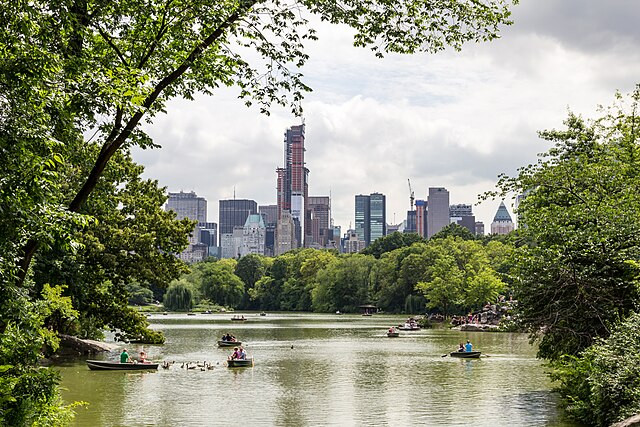After the driest October in New York City's recorded history, Mayor Eric Adams declared a drought watch on Saturday, urging New Yorkers to conserve water amid growing concerns over a potential shortage. The drought watch is the first stage in a three-tier system that could escalate to more severe measures if conditions persist. Mayor Adams warned residents to take immediate steps to reduce water use, including fixing leaky faucets, taking shorter showers, and limiting outdoor water use.
The declaration follows an exceptionally dry October, with only 0.01 inches of rain recorded in Central Park, a stark contrast to the typical 4.4 inches expected for the month, according to the National Weather Service. "Mother Nature is in charge, and so we must make sure we adjust," Adams said in a public address, highlighting the importance of immediate action.
Mayor Adams has directed all city agencies to update and prepare their water conservation plans to prevent further strain on resources. "We're going to do our part as a city as well," he stated, adding that water-saving efforts now could help ensure the city's parks and pools remain open next summer. "By starting to save water now, we're doing everything we can to make sure that we can water our parks and fill our pools come summer, and to stave off a more serious drought emergency."
In addition to low rainfall, New York City is grappling with significant infrastructure challenges. Repairs on the Delaware Aqueduct, one of the city's largest water sources, are currently underway, reducing access to critical water supplies from the Catskill Mountains. Consequently, the city is more dependent on other reservoirs in upstate New York, which also saw abnormally low rainfall, receiving only about one-fifth of the usual October levels. Camille Joseph Varlack, Adams' chief of staff, emphasized the importance of early action, saying that current efforts "could offset the need for more stringent measures in the future."
The recent dry spell is part of a larger trend across the northeastern United States. Last month, nearly half the country was classified under a "flash drought," a rapid onset of dry conditions caused by low precipitation and unusually high temperatures. This phenomenon has led to complications throughout the region, including restricted shipping on the Mississippi River and increased wildfire activity in states like Connecticut, where a firefighter recently lost his life battling a blaze likely caused by an improperly extinguished campfire.
With the drought watch in place, New York City's Department of Environmental Protection is urging residents to adopt water-saving practices. Simple actions, like turning off the tap while brushing teeth and reporting open fire hydrants to 311, can make a difference, officials say. Additionally, city officials advise sweeping sidewalks rather than hosing them down to conserve water.
The timing of the drought is particularly challenging. While New York City's water use has decreased by 35% since 1979, thanks in part to improved leak detection and conservation efforts, it still consumes an average of 1.1 billion gallons daily. The reliance on upstate reservoirs, combined with the reduced output from the Delaware Aqueduct, has put additional pressure on water supplies.
Environmental experts point to unusual weather patterns as a key factor in the region's recent dry conditions. Typically, moisture from the Gulf of Mexico replenishes the Northeast, but this year, those patterns shifted, leaving the area unseasonably warm and dry. Last month saw record-high temperatures reaching the low 80s Fahrenheit across New York and other northeastern states, contributing to the rapid depletion of soil moisture.
As New Yorkers adjust to the drought watch, city officials emphasize the collective impact of small conservation efforts. "The administration is ready to implement immediate measures across city agencies to conserve water and stands prepared to take further actions if required," Varlack said.






